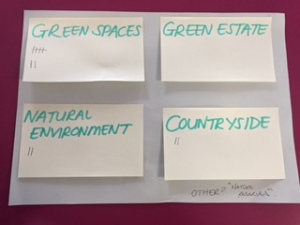It all feels a bit like Star Trek’s famous split infinitive but we now need to push on into new digital territories!
We have successfully built the digital foundations that can deliver transformation across the Council – a new, vastly improved website, redesigned microsites, a refreshed schools portal and implemented a social media strategy. A beta version of our new intranet is also being built and should go live in the next few weeks. So what is the next frontier?
While we have undoubtedly improved the customer experience, regained control and visibility of our social media and established a solid platform, we have still not fully delivered the much-heralded savings that are often attached to digital transformation.
This is a point in the development that many others have reached; it is also a point that many get stuck due to the different challenges the next phase brings.
What makes me hopeful that we will make the necessary progress is the fact that all the achievements to date have been delivered by an excellent in-house digital team that we have built that has worked closely with ICT and Customer Service teams. If we had gone external in terms of delivery, I don’t think we would have developed the skills, knowledge or relationships that would all us to get us to the next level.
That said, while all the existing skills remain relevant and needed, I think that the next phase will also involve a different set of skills. This is because we will now need to push into territory that is normally fiercely protected – the area of service redesign. Anyone who has ever worked in local authorities will know that this is a step not taken lightly but there is no choice if we are to start seeing the true potential of digital. It is not about putting the existing process online, nor is it about optimising the current process and then putting it online. It is about designing a journey from scratch with a digital mind-set from the outset. That is not to say that offline elements of the journey don’t need to be considered – they absolutely do, but they can’t be the driving force. Also an offline option needs to be integrated into any design to make sure that those unable to use the online solution are not left behind.
The culture and management structure means that to get into this area – the heart of the Council – will take political manoeuvring, the leveraging of influence, keen project management skills and a dollop of luck for good measure. Oh, and if I am going to continue the Star Trek theme, a fully loaded space-age taser set to stun!
Taking this blog back to reality, I am fortunate enough to have a place on our Corporate Leadership Team which provides the perfect platform to help navigate through the many challenges and natural resistance. Anyone setting out on a Phase II digital project that involves going into service areas will need a sponsor at the highest level – preferably the Chief Executive – if they are going to succeed.
We are identifying all of those customer journeys that would deliver savings by being optimised for a self-service, online delivery. This will often mean replacing a labour intensive process with an automated process. It will meet resistance. (Note to Editor: resist using the Star Trek phrase “resistance is futile”) The first journeys are likely to be the most difficult. Early wins will be critical.
Where’s Captain Kirk when you need him!
Posted by Martin Done, Communications and Marketing Director







